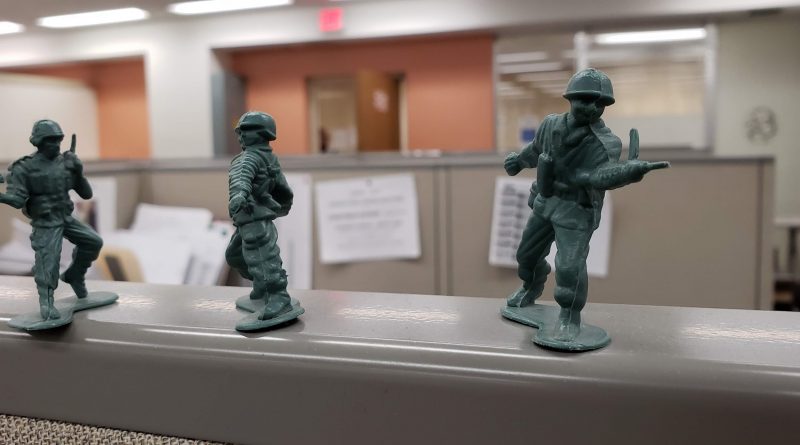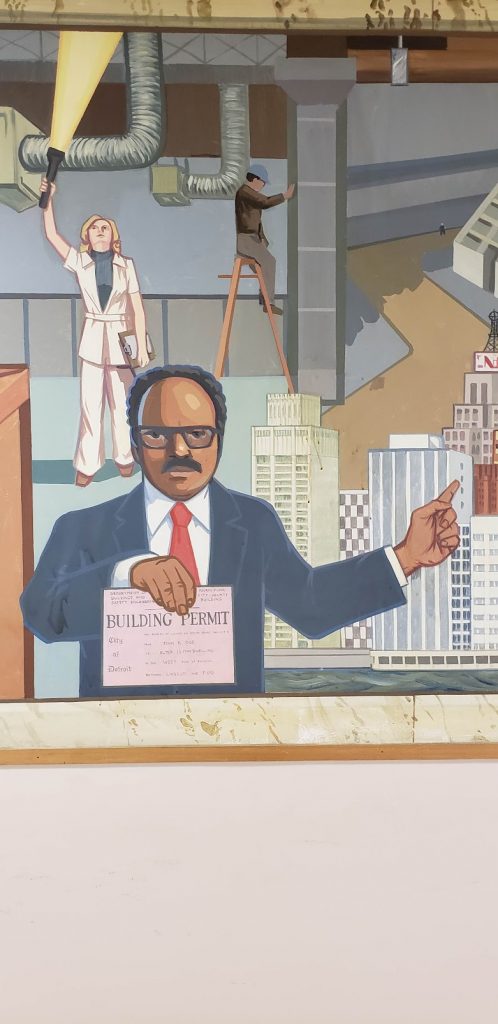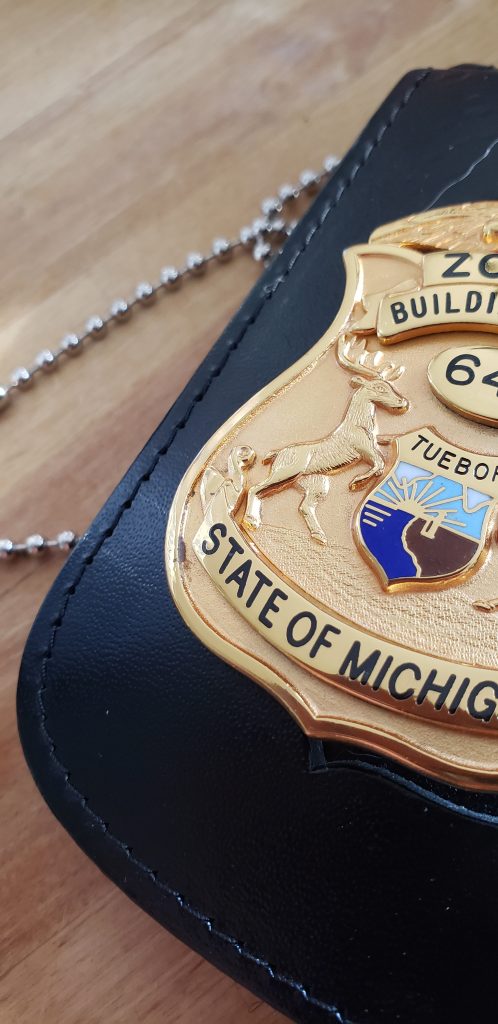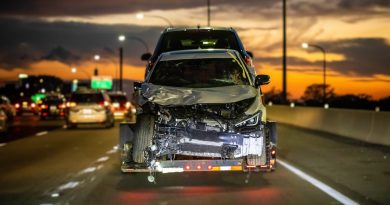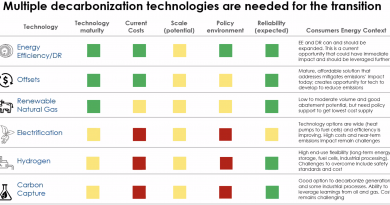Police Reform: Imagining New Roles For A Safer, More Functional Society
A dear friend hit me up yesterday with lunch from the ancient and honorable Hygrade Deli on Michigan Avenue. A city employee, he was in the neighborhood to See A Man About A Speed Hump Installation, as it were. The city is installing thousands of speed humps to try and reduce speeding. It’s a welcome initiative in a city that routinely ranks among the nation’s most dangerous in terms of pedestrian and cyclist fatalities. As happens with many of our conversations, our conversation quickly turned to the hot topics du jour– in this case, police reform. The police do very little to stop traffic violence in Detroit. Maybe instead of asking “why the hell not?” we should instead ask, “might not someone other than the police be suited to address this issue?”
Said friend and I often talk about the need to get outside the echo chamber. Getting past the talking points is a hard thing to do, especially when we can’t agree on what the talking points even are– or should be. But there are rallying cries, and the rallying cries are things many people don’t seem to understand. The big one these days among liberals and the left? Defund the police! Or, more ambitiously? Abolish the police! These are both very complicated, so it’s first important to understand what each one can mean.
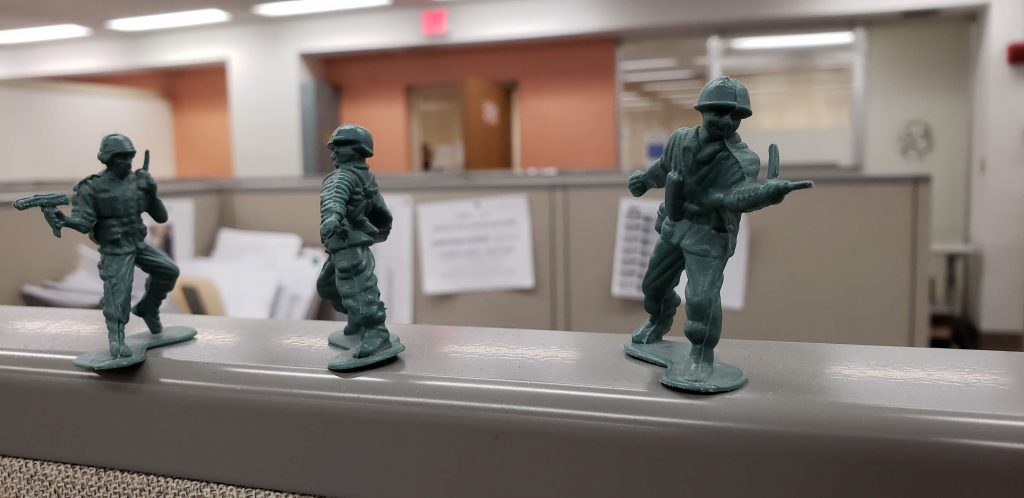
Understanding Language: Reform, Defund, & Abolish
The movement for police reform, or to “defund” police departments, comes after criticism has pointed out that police departments occupy a staggering percentage of most municipal budgets. It’s not just operating budgets– it’s also settlements for lawsuits. Defendants often settle lawsuits to protect themselves from having to admit wrongdoing. When individual humans aren’t held liable for actions, the institution can just stick the taxpayers with the bill. The problem with this, other than perhaps the utterly obvious fact that it doesn’t allow cities to spend money on other things– like schools, parks, public health, housing, economic development, or transportation- is that there’s not really much evidence to suggest that increasing police funding actually correlates to decreases in crime.
Police reform, elusive though the term may be, is one thing. But it’s hard to imagine eliminating police in a society that has more guns than people.
This is to say nothing of why police are allowed to acquire surplus military hardware to kill people or drive over mines (what?). Again, that’s, as they say, a whole ‘nother ball of wax.
Police abolition, in comparison, is a step that is a bit more radical than police reform or police defunding. For various reasons, it’s not something I need to get into here. Suffice it to say that it’s hard to imagine eliminating police in a society that has more guns than people. So, rather than just say, “Defund! Abolish!” it’s time for us to start thinking about what a new system could look like. And why it should look like this.
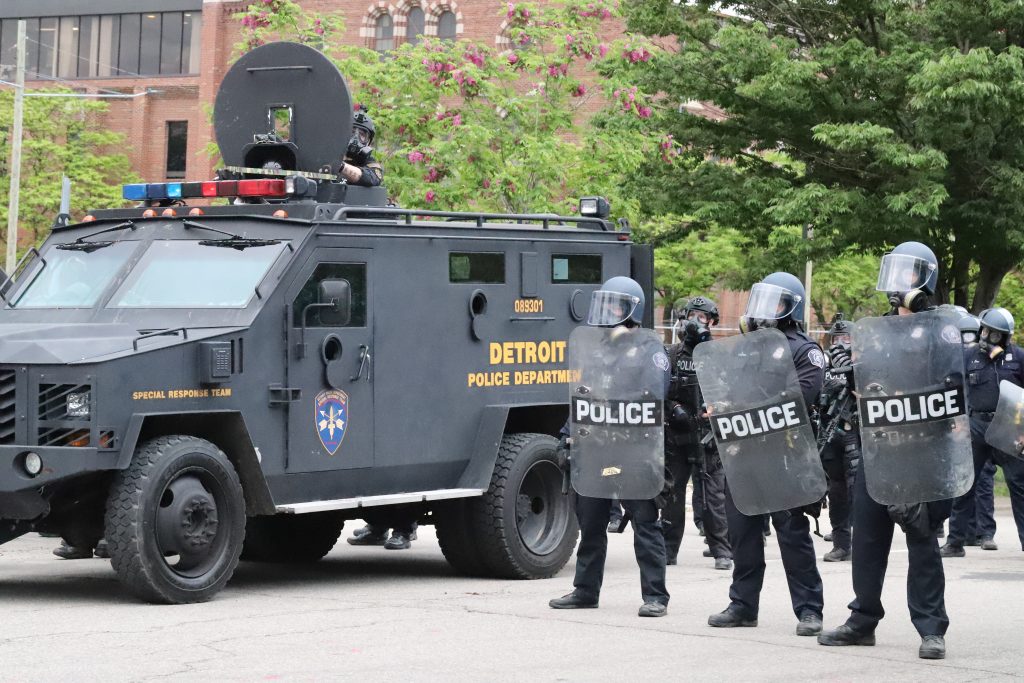
Allocating Responsibilities Where They Belong
My friend related experiences at public meetings. Public meetings are, to be clear, always a bit of a shitshow, in a society with as much wealth inequality and as much well-worn tolerance for municipal austerity. Host a meeting about trash collection, you’ll get a resident yelling about trash collection. Host a meeting about community policing? You’ll get a resident yelling about trash collection. The democratic apparati of shrinking cities are wholly inadequate to address the needs of residents of these cities. After all, we spend more money on corporate welfare for suburban billionaires than we do on, well, the humans who live in the city.
So, people are, often quite appropriately, angry at their city government. This is, again, largely outside the scope of this article, but it’s something worth thinking about. For our purposes here, though, my friend mentions residents raising questions about how police can stop people from speeding in cars.
“The fuck is a police officer going to do to reduce the rate of speeding on a city street?” he asks. “You really expect him to sit out there all day waiting to catch someone speeding? That’s a deterrent. It’s not solving the root of the problem. He’s not a city planner. He’s not DPW [the Department of Public Works].”
Case 1: Encouraging Safer Behavior For Drivers
Rather than call the cops to complain about speeding, what if the Department of Public Works could intervene and install a temporary– and, eventually, a permanent- traffic calming measure? Police departments are, by definition, reactive. They’re not proactive. You can’t use a gun or a taser to slow down a speeding car. Rather, you can use a speed hump to slow down a speeding car.
In the new system, the police are not the only first responders. They are first responders to– and only to- life-or-death issues involving credible, immediate threats of lethal violence. This borrows the same legal principle of the use of guns in self-defense. You’re generally only allowed to draw a gun on someone in response to the immediate threat of lethal violence (unless they’re breaking into your house, in Castle Doctrine states).
Police are great at collecting information. They’re really bad at doing anything with it, though.
How many crimes do police respond to on a daily basis that do not involve credible, immediate threats of lethal violence? Also, think about how many infractions are effectively civil infractions that don’t need to involve lethally armed officers in the first place. Now, think about how many issues are not issues that need involve police at all, but are rather information disconnects.
Case 2: Traffic Stops
Traffic stops are another great example. Traffic safety is a crucial issue of public safety (remember Angie Schmitt’s book?), but the presence of police may well end up being more of a threat to safety than a deterrent to unsafe driving. This has come up in so many traffic stops that end in, well, sanctioned state murder. What if the people responding to traffic enforcement weren’t armed officers at all? They could still drive cars with sirens. Hell, they could still carry badges. (As a city building official, I used to carry a badge, and the state statutes that empowered me to do so allowed me to enforce non-criminal law within my municipal jurisdiction).
“In that case, when you see flashing lights, you’re not worried that it’s possible you’ll get murdered.”
“Exactly. Because the people who pulled you over, their sole purpose is traffic enforcement. You don’t have to worry about if the whip smell like weed, you don’t have to worry about them taking half an hour to run a background check to see how many bodies you got on you, or whatever. It’s just like, you were speeding. Don’t speed. Here’s a ticket.”
Police Reform – Alternatives By Category
Currently, armed police officers often respond to virtually all of the below scenarios. There is no reason why they need to respond to any of the following. Accordingly, I’ve created new “Thin [x] Line” categories to describe each of the professionals involved:
- The Thin Roof Line. Housing resources and professionals who can connect residents with housing resources. Cities spending less money on policing can spend more money on housing. More housing security means less crime.
- The Thin Concrete Line. Departments of public works and planning. These are the people who maintain streets, traffic control devices, and make design decisions that ideally make communities safer. This isn’t a question of police reform, but rather of refinement of communications channels. We can improve lines of communication between public works officials, residents, and police.
- The Thin Paperwork Line. Legal aid lawyers can help residents in situations involving illegally-substandard housing, domestic abuse, or other family issues. We can increase communication and information-sharing between city building departments and legal aid services.
- The Thin Safety Net Line. Social workers and healthcare professionals. In the wake of the protests over the murder of George Floyd, a number of police reform movements have started replacing a number of armed officers with unarmed social workers to respond to certain calls. It is hard to not see this as a win, given that it allows us the possibility of reducing the presence of lethally armed responders in many scenarios. It also removes the kneejerk reaction of, “oh, this person is having a mental health crisis, so, better lock them up,” or, far worse, “better shoot them dead,” as we’ve seen in so many tragic scenarios across the nation. More economic opportunity means less crime.
From Punishment to Economic Empowerment
- The Thin Linen Line. This is perhaps the most abstract. I’m thinking about linen in terms of money– an information system that is limited in many communities suffering from high rates of crime and limited public services. But the issue of economic access is not limited to the hood. You know those stories about some Karen who calls the police on some little girl selling lemonade? What if regulatory powers were more focused on helping, as BSEED Director Dave Bell always said, “get them across the finish line?” (Ironically, BSEED was much more interested in command-and-control than entrepreneurial problem-solving. But that’s a story for another day.) More economic opportunity means less crime.
Starting With The Simple Stuff
The nice thing about all of this is that it doesn’t actually necessitate some sort of grand or controversial disruption of existing structures. It’s really just a retooling of information systems. Police are great at collecting information. They’re really bad at doing anything with it, though. It’s partially a product of the fact that our systems do not talk to one another.
It’s also a product of the fact that police departments are reactive agencies, rather than proactive agencies. And frankly, they don’t need to be proactive– they’re not suited to deal with many of these issues. We should instead empower the professionals who are suited to deal with these issues. This can save taxpayers a ton of money. It can also save lives, whether by way of reducing homicides-by-cop, reducing the incidence of domestic violence, or reducing incidence of traffic violence.
Join the mailing list for more content on urbanism, police reform, sustainability, and more!

